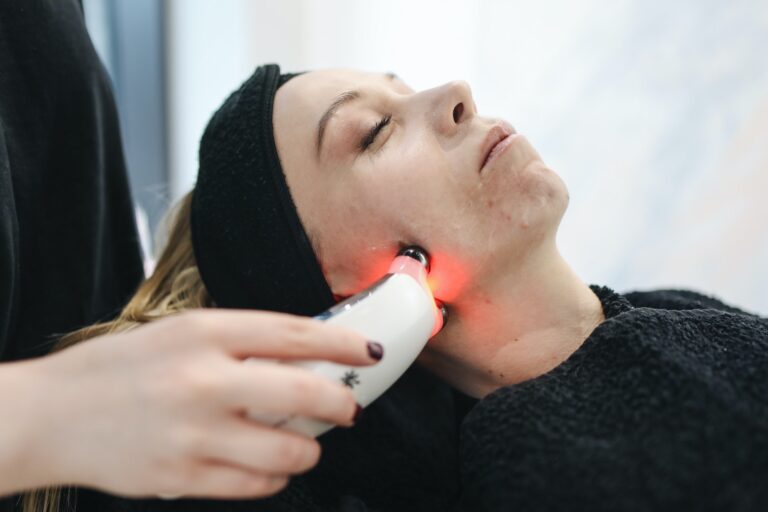6 Incredible Ways Botulinum Toxin (Botox) is used in The Management Of Movement Disorders
Botulinum toxin (Botox) is a powerful neurotoxin that is used to treat a variety of movement disorders. Botox is also used to reduce wrinkles and is sometimes used to treat hair loss. In this article, we will explore the use of Botox in the management of movement disorders.
Botulinum toxin is a powerful neurotoxin that is used to treat a variety of movement disorders. Botox is also used to reduce wrinkles and is sometimes used to treat hair loss. In the management of movement disorders, Botox has several key benefits. First, it is an effective treatment for tremors, and spasms.
Second, it can improve functional mobility and quality of life in those with multiple sclerosis and cerebral palsy. Third, it can reduce symptoms associated with Parkinson’s disease. Finally, Botox can be an effective treatment for cervical dystonia and glaucoma.
When choosing which movement disorder to treat with Botox, it is important to consider the specific symptoms that are causing distress. For example, if tremors are causing anxiety or difficulty sleeping, then Botox injections may be the best option for managing that symptom. Conversely, if spasms are causing pain or dysfunction, then surgery may be the best option for treating that condition.
Botulinum toxin has a number of side effects that should be considered prior to treatment. These side effects include botulism (a serious complication caused by the injection of botulinum toxin), injection-site reactions (including pain, redness, swelling), myopathy (disruption of muscle function), and neuropathy (damage to nerves). In addition to these side effects, there are also general risks associated with any medical procedure; for example, the risk of infection or blood clots.
6 Incredible Ways Botulinum Toxin (Botox) is used in The Management Of Movement Disorders
Botox And Myasthenia Gravis
Botox is a powerful medication that has been used to treat a variety of medical conditions for over two decades. However, it is now being increasingly used to treat movement disorders, including myasthenia gravis and cervical dystonia.
Myasthenia gravis is a disorder that causes muscle weakness and difficulty breathing. Treatment options include medications, surgery, and radiation therapy. Botox has been shown to be an effective treatment for myasthenia gravis, although it does have some side effects (including injection-site reactions).
Cervical Dystonia
Cervical dystonia is a disorder that causes twisting or bending of the neck or spine. Treatment options include medications (gabapentin and valproate), surgery (pectoral nerve block), and botulinum toxin injections (CBT). CBT is the most common treatment for cervical dystonia, and it involves injecting botulinum toxin into the muscles that cause the symptoms. Botox has been shown to be an effective treatment for cervical dystonia, with few side effects (injection-site reactions being the most common).
There are many other conditions that can be treated with botulinum toxin; it is an extremely versatile medication. If you are considering using botulinum toxin to treat your movement disorder, be sure to discuss your symptoms with your doctor. They will help you choose the best treatment option for you.
How Does Botox Work?
Botox works by blocking nerve impulses in the muscles, which reduces the appearance of wrinkles and other cosmetic concerns. Botox is most commonly used to treat frown lines between the eyebrows, crow’s feet around the eyes, and lines on the forehead.
Botox is a versatile treatment that offers more than just cosmetic benefits. While commonly known for its effectiveness in reducing wrinkles and fine lines, it can also be used to treat various medical conditions. For instance, Botox can address muscle spasms, lipomas (fatty tumors), and even provide relief for facial expressions associated with migraine headaches.
Additionally, Botox is becoming increasingly popular for its therapeutic uses, and it has proven to be an effective option for various non-cosmetic concerns. If you’re considering Botox treatment for cosmetic or medical purposes, it’s crucial to consult with a reputable provider, such as The Aesthetic Surgery Durham, to ensure safe and effective results.
Botox And Parkinson’s Disease
Parkinson’s disease is a neurodegenerative disorder that causes difficulty with movement and balance. Botulinum toxin can be used to improve symptoms of Parkinson’s disease, including muscle stiffness, rigidity, and tremors.
Botox is also being studied as a possible treatment for other neurodegenerative diseases, such as Alzheimer’s disease and dementia.
Focal Dystonia
Focal dystonia is a condition in which a part of the body — usually one muscle — becomes abnormally active and difficult to control. Botulinum toxin can be used to treat focal dystonia by reducing muscle activity in the affected area.
Using Botox To Treat Hair Loss
Hair loss can be a frustrating experience, especially if it’s not controlled. If you’re considering using botulinum toxin to treat your hair loss, be sure to discuss your symptoms with your doctor. They will help you choose the best treatment option for you.
Botulinum toxin is most commonly used to reduce hair growth on the face and head, but it can also be used to treat other areas of the body, such as arms, legs, and chest.
There are several types of botulinum toxin available, all of which have different side effects and require different treatment protocols. Your doctor will determine which type of botulinum toxin is best for you based on your symptoms and medical history.
If you’re considering using botulinum toxin to treat your hair loss, be sure to discuss your symptoms with your doctor. They will help you choose the best treatment option for you.









